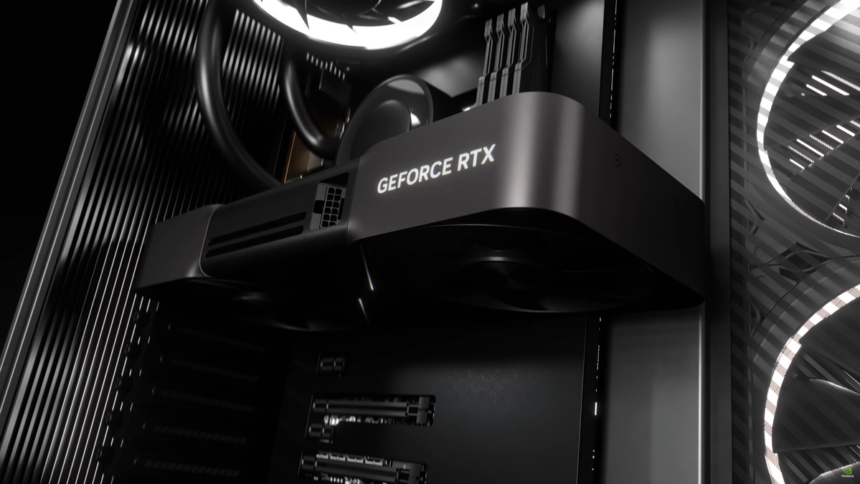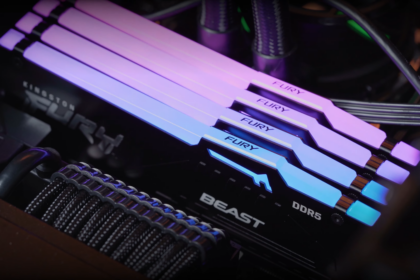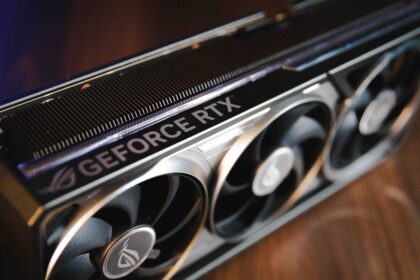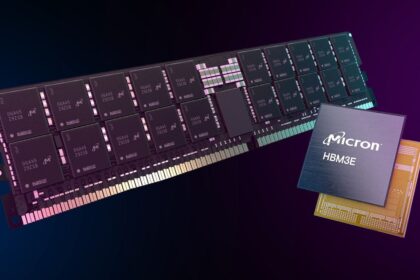The mid-range graphics card segment is often the second most popular after entry-level options, as confirmed by Steam’s hardware surveys. With the announcement of the GeForce RTX 50 series, NVIDIA has introduced two models in this category: the RTX 5070 and RTX 5070 Ti. Let’s explore how these GPUs stack up against their predecessors.
According to the latest Steam survey, the RTX 4070 currently ranks as the 11th most widely used GPU, holding a 3.30% market share. Interestingly, the RTX 3070 still grows in adoption, maintaining its appeal to gamers. This trend suggests that by 2026, the RTX 5070 has a strong chance of becoming one of the most popular GPUs among PC gamers, potentially securing a spot in Steam’s top 10 list.
Main changes between the RTX 5070 and RTX 4070
The GeForce RTX 5070 introduces a significant upgrade for gaming and content creation with the debut of GDDR7 memory technology, despite retaining the same 12 GB VRAM and 192-bit interface as its counterpart from the Ada Lovelace generation. This cutting-edge memory tech first launches with the RTX 5090 and RTX 5080 on January 30th, before making its way to the mid-range segment in February.
With GDDR7, the Blackwell-powered RTX 5070 achieves a bandwidth of 672 GB/s, thanks to VRAM speeds of 28 Gbps. Meanwhile, the RTX 5070 Ti steps up with 16 GB of GDDR7 memory on a 256-bit interface, delivering an impressive 986 GB/s bandwidth. These memory improvements translate to tangible benefits in both gaming performance and content creation workloads, offering faster data processing and smoother experiences across a variety of applications.
DLSS 4 assistance
The GeForce RTX 5070 boasts significant advancements with its new 5th-generation Tensor cores and 4th-generation RT cores, delivering performance comparable to the RTX 4090 in specific scenarios. These enhancements are largely driven by the innovations in NVIDIA DLSS 4, particularly the new Multi Frame Generator (MFG) technology.
MFG works by generating three AI-created frames for every single frame rendered by the GPU, dramatically boosting performance and ensuring smoother gameplay. This leap in AI-driven processing power makes the RTX 5070 a strong contender for gamers and creators seeking cutting-edge performance at a more accessible price point.
| GeForce RTX 5070 Ti and 5070 specifications | ||||
| GPU | RTX 5070 Ti | RTX 4070 Ti | RTX 5070 | RTX 4070 |
| CUDA Cores | 8,960 | 7,680 | 6,144 | 5,888 |
| Base and boost clocks | 2.30/2.45 GHz | 2.31/2.61 GHz | 2.16/2.51 GHz | 1.92/2.48 GHz |
| Memory | 16 GB GDDR 7/256-bit | 12GB GDDR6X/192-bit | 12GB GDDR7/192-bit | 12GB GDDR6X/192-bit |
| Memory speed | 28Gbps/896GB/s | 21Gbps/504GB/s | 28Gbps/672GB/s | 21Gbps/504GB/s |
| TDP | 300W | 285W | 250W | 200W |
| Price | $749 | $799 | $549 | $599 |
| NVIDIA DLSS 4 (MFG) | Yes | No | Yes | No |
| Reflex 2 | Yes | No (initially) | Yes | No (initially) |
The new advancements in NVIDIA’s RTX 50 GPUs showcase a significant leap in performance, even for models like the RTX 5070, which have lower specifications compared to the top-tier RTX 4090. This performance boost is primarily driven by improvements in AI and ray tracing cores, coupled with software-level optimizations. Notably, DLSS 4 plays a critical role, particularly in resource-intensive titles with Path Tracing, enabling the RTX 5070 to deliver on the promise of enhanced gameplay performance.
Another standout feature is Reflex 2, which reduces input latency in games, providing a smoother experience—especially valuable in competitive gaming. While Reflex 2 support will eventually extend to the rest of the RTX family, NVIDIA has yet to confirm the rollout timeline.
In addition to its performance gains, the RTX 5070 offers impressive efficiency and value. It consumes 200W less power than the RTX 4090 while costing less than half the price—a compelling advantage. However, compared to its predecessor, the RTX 4070, it does consume 50W more power but compensates for this with a $50 lower price tag, making it an attractive choice for gamers looking to upgrade.
GeForce RTX 5070 Ti
The RTX 5070 Ti comes with similar improvements to the RTX 5070, but it offers some extra benefits compared to the RTX 4070 Ti. One of the standout features is the 16 GB of GDDR7 memory, which is 4 GB more than the previous generation, along with the added advantage of GDDR7 technology over GDDR6X. This change results in faster memory performance, providing a noticeable boost for gaming and content creation.
Although the power consumption increases by 15W, the price also drops by $50, making the RTX 5070 Ti a more affordable option while still delivering excellent performance. NVIDIA promises more than double the performance, especially when DLSS 4 is activated, significantly enhancing gaming experiences.
The real strength of both the RTX 5070 and RTX 5070 Ti lies in the combination of software improvements and next-generation dedicated cores like Tensor cores for DLSS and RT cores for ray tracing. These upgrades ensure that even with more modest hardware specs, these GPUs offer superior performance compared to previous generations.
While there are differences in hardware, such as CUDA cores, ROP, and other specs, these changes are typical with each new generation and don’t need to be emphasized as key differentiators. The overall focus is on the added performance through software and architectural enhancements.











